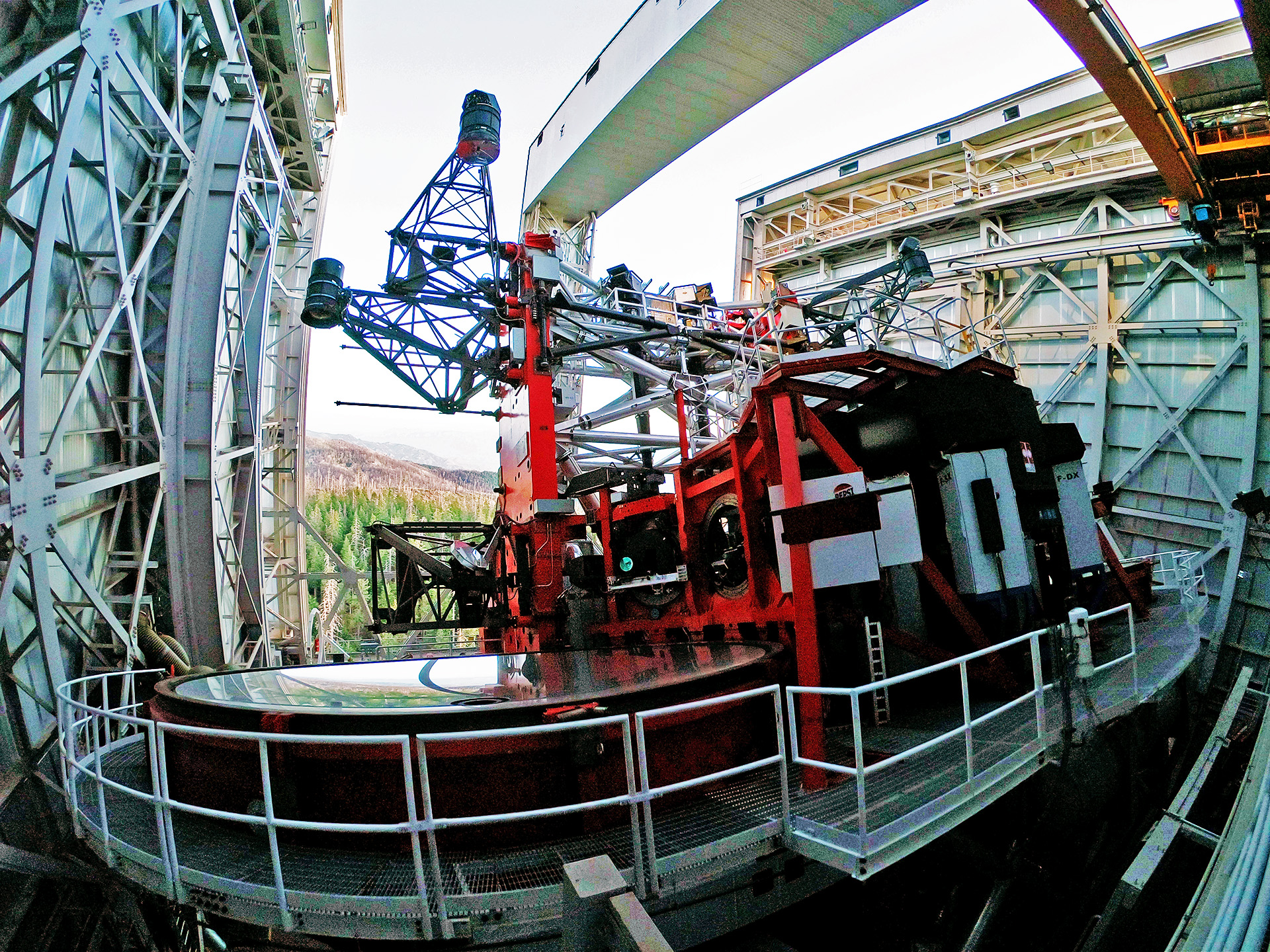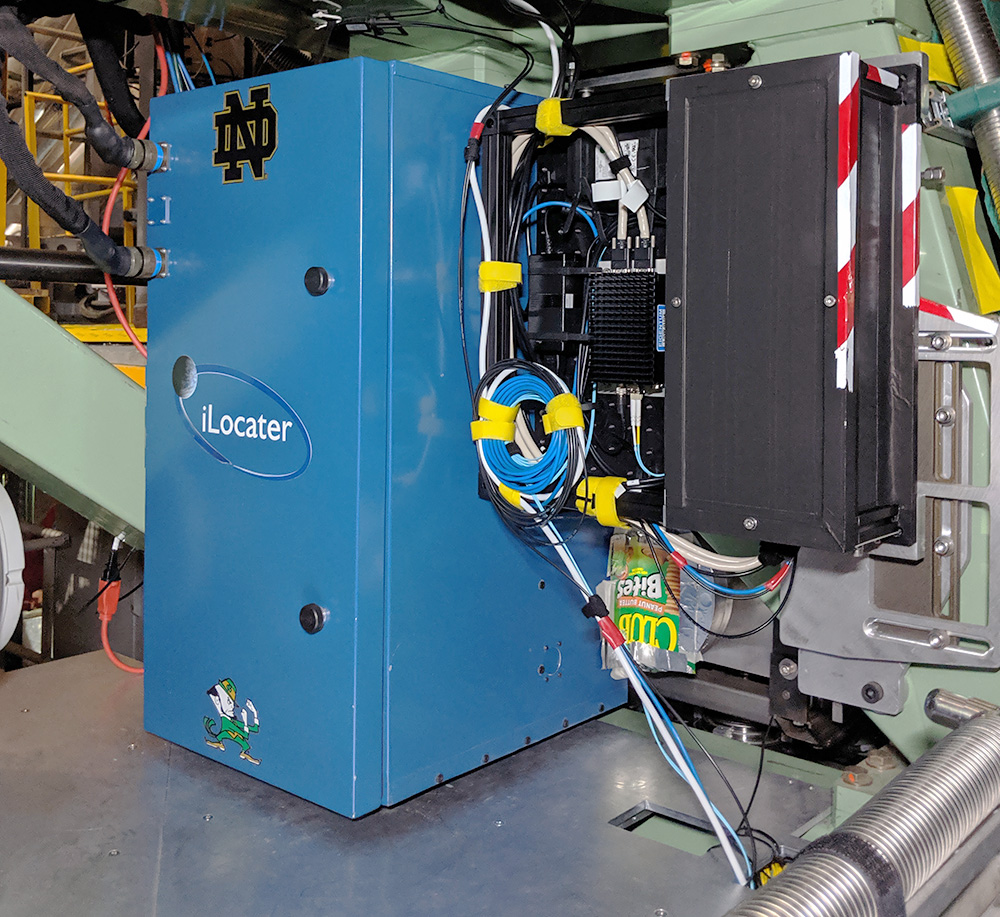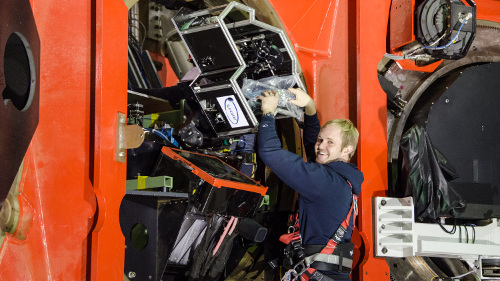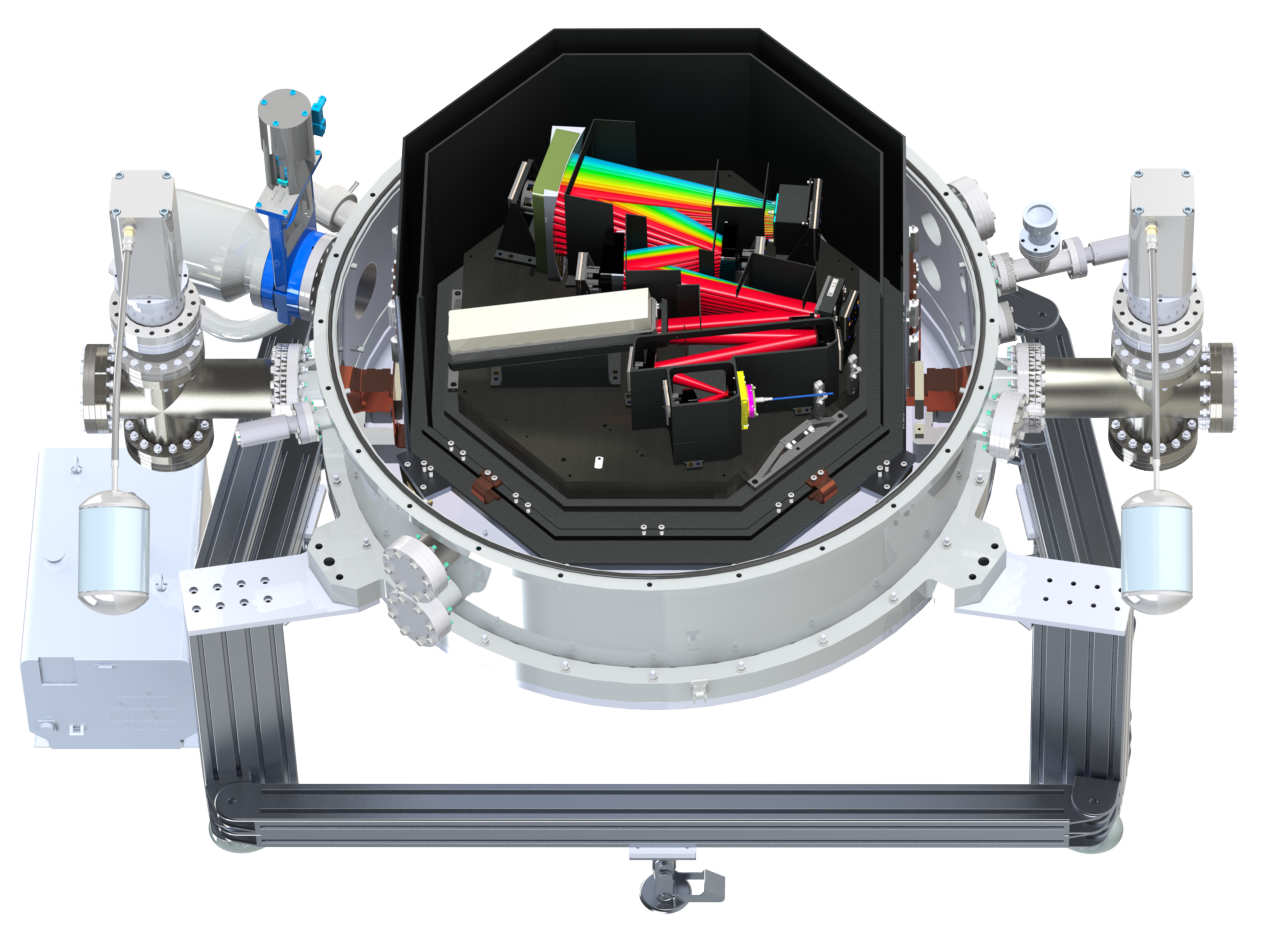iLocater

 The dual 8.4m Large Binocular Telescope, AZ, USA.
The dual 8.4m Large Binocular Telescope, AZ, USA.
 The SX acquisition camera module installed at the LBT in 2019.
The SX acquisition camera module installed at the LBT in 2019.
 Installing the iLocater fiber-coupling demonstration on the right hand (DX) side of the LBT in 2016.
Installing the iLocater fiber-coupling demonstration on the right hand (DX) side of the LBT in 2016.
 The iLocater team operating the telescope AO system and demonstration fiber-coupling system (from front to back - J.Crass, R. Ketterer, A. Bechter, E. Bechter).
The iLocater team operating the telescope AO system and demonstration fiber-coupling system (from front to back - J.Crass, R. Ketterer, A. Bechter, E. Bechter).
My research focuses on the design, development and construction of iLocater, a new ultra-precise radial velocity instrument to search for planets around other stars. I am Co-Principal Investigator and the Instrument Scientist for the program. Designed for use with the extreme adaptive optics (AO) system of the the dual 8.4m mirror Large Binocular Telescope (LBT) in Arizona, iLocater comprises four main components:
- An acquisition camera to couple light from each telescope dish into separate single-mode optical fibers.
- A fiber-fed high-resolution spectrograph working at Y- and J-band wavelengths.
- A cryostat which houses the instrument spectrograph in a thermally stabilized vacuum environment.
- A calibration system used to provide an absolute wavelength reference on the spectrograph detector and act as a diagnostic tool for systematic effects.
My work focuses on all aspects of the instrument program, in particular the design and commisioning of the acquisition camera, the design of the spectrograph and the design and construction of the cryostat.
To find out more about iLocater, visit the iLocater website.
Acquisition Camera
The iLocater acquisition camera independently couples AO corrected light from the two sides of the LBT into single-mode fibers. The camera is mounted on the existing Large Binocular Telescope Interferometer (LBTI) at the LBT. Achieving an efficient coupling into single-mode fibers is requires careful control and of the telescope beam and the acquisition camera has been designed to meet these requirements.
The acquisition camera for the left (SX) side of the LBT was installed in 2019 and successfully commissioned on-sky (find out more here). This followed on from a demonstration system installed at the LBT in spring 2016 using the right (DX) side of the telescope. This instrument was the first instrument to test single-mode fiber coupling on-sky at near-infrared wavelengths using a high-order adaptive optics system. Successful demonstration of this capability was a critical step in the development of iLocater. The final acquisition camera has demonstrated coupling efficiencies in excess of 30% and at times, greater than 40%. This is well in excess of the threshold needed to enable science observations with iLocater.
You can find out more about the iLocater acquisition camera in our published papers and on the posters we presented at the 225th Meeting of the AAS in Seattle, January 2015 and SPIE in San Diego, August 2015 and the accompanying conference proceedings.
Spectrograph & Cryostat
The iLocater spectrograph has been designed from fundamental science requirements to enable precision studies of exoplanets. One of the key challenges which limits our studies today are changes in the star which distant planets orbit around. Just like our Sun which has sun spots, solar flares and other phenomena on its surface, distant stars also have a changing surface which, when making precise measurements, these effects can dwarf the signals we're trying to measure of planets. iLocater is designed to address this by making high-resolution precision measurements which will begin to allow scientists to detangle effects from the star and real signals from planets.
To enable these measurements, the iLocater spectrograph must be placed in a temperature stabilized vacuum. This is done using the instrument cryostat which ensures a temperature (<1mK changes) and pressure stable environment for the optics. The spectrograph and cryostat are both currently being built and are expected to be completed during 2021.
 CAD rendering of the conceptual design of the iLocater cryostat. The optics are mounted to an Invar board to minimize displacements with temperature fluctuation. This is housed within two radiation shields, minimizing thermal fluctuations and achieving a stability of better than 1mK.
CAD rendering of the conceptual design of the iLocater cryostat. The optics are mounted to an Invar board to minimize displacements with temperature fluctuation. This is housed within two radiation shields, minimizing thermal fluctuations and achieving a stability of better than 1mK.
High-sensitivity wavefront sensing for Adaptive Optics
The focus of my Ph.D. research at the Institute of Astronomy, University of Cambridge was with the Adaptive Optics Lucky Imager (AOLI) instrument. This instrument, initially being designed for use at the William Herschel Telescope, is being built by a collaboration of research institutions in Europe and aims to provide diffraction limited imaging at visible wavelengths using large ground-based telescopes.
You can download a copy of my PhD thesis.
